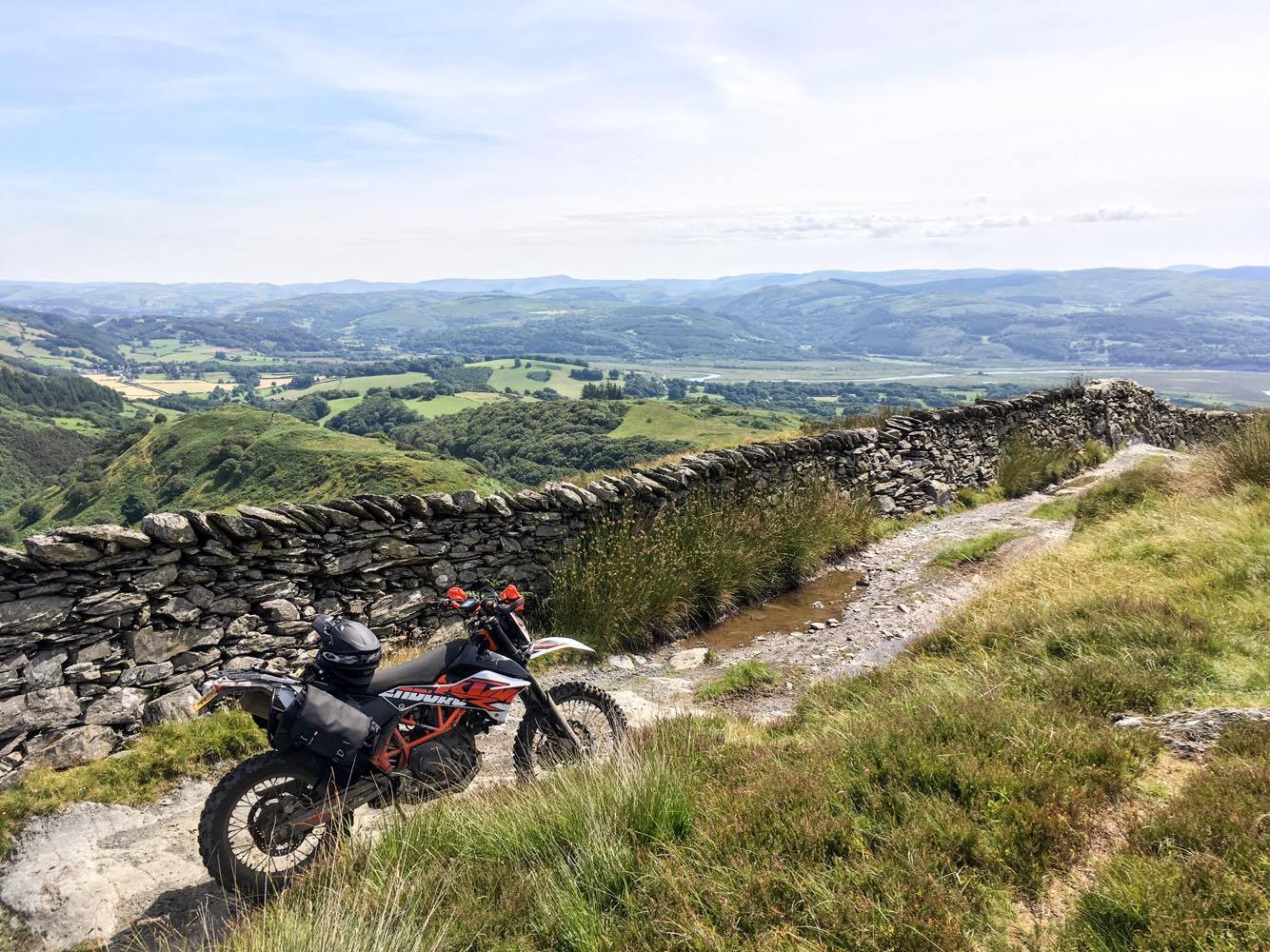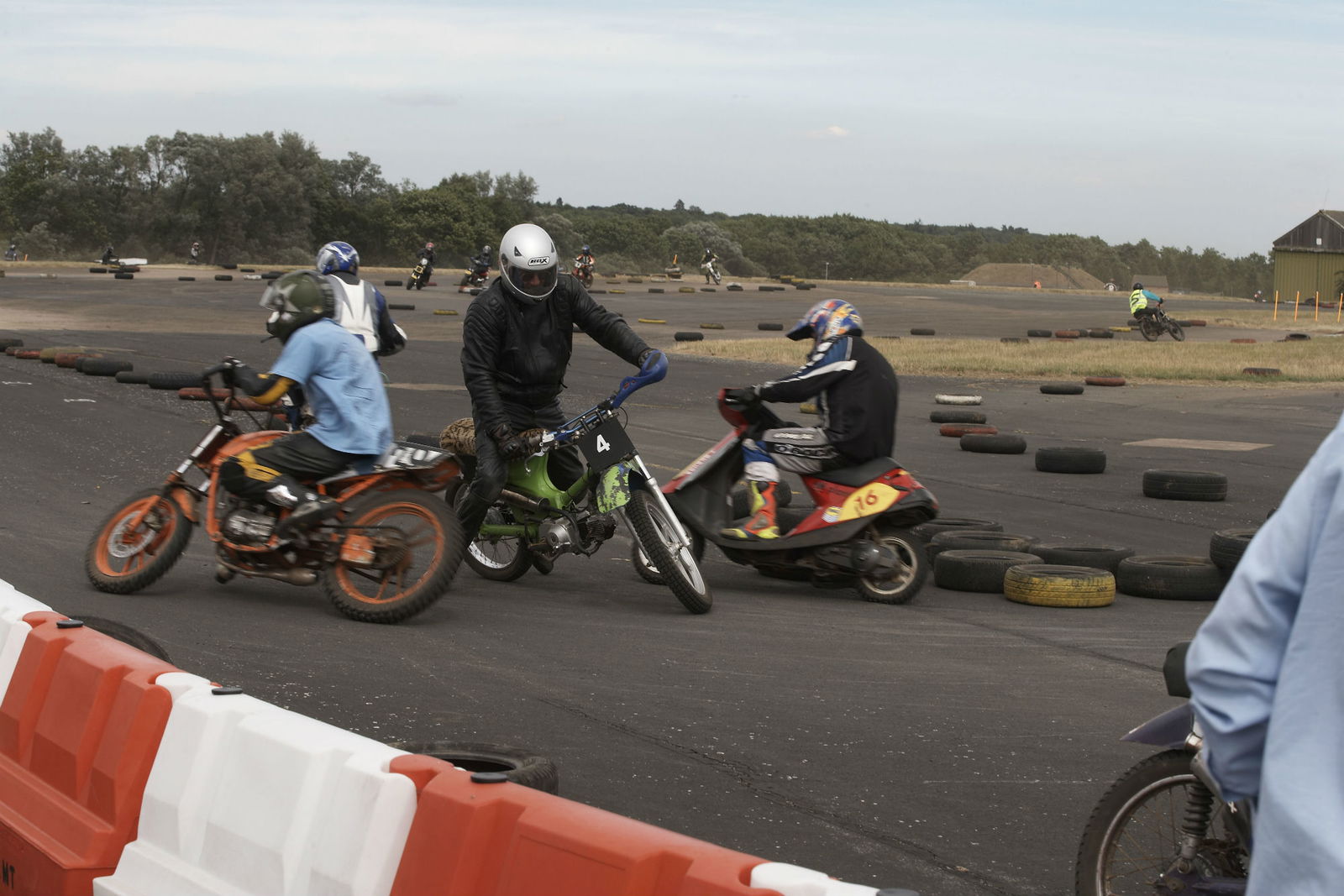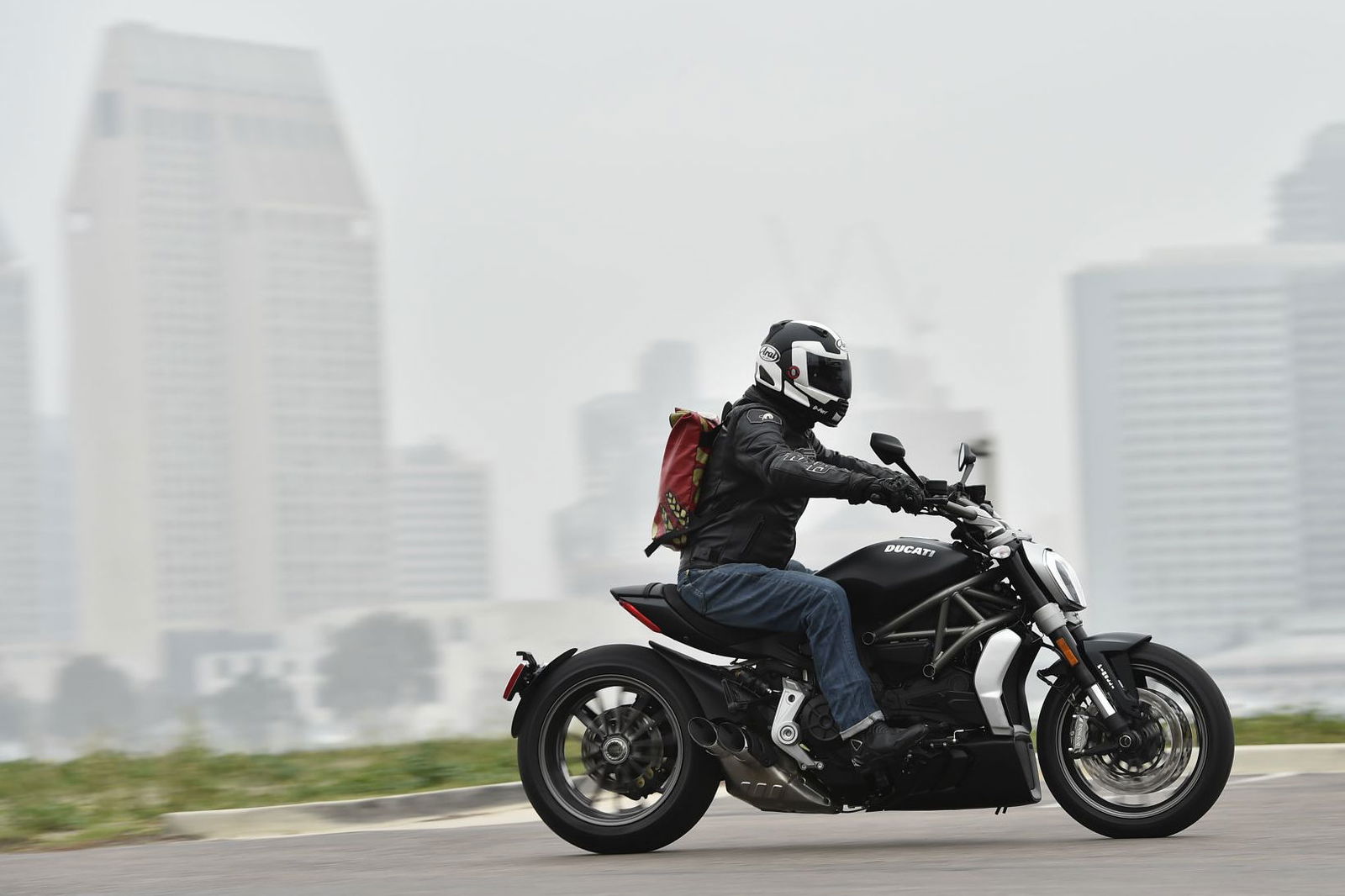Essential advice for green-laning
Go off road to improve your riding – or just to have a top laugh
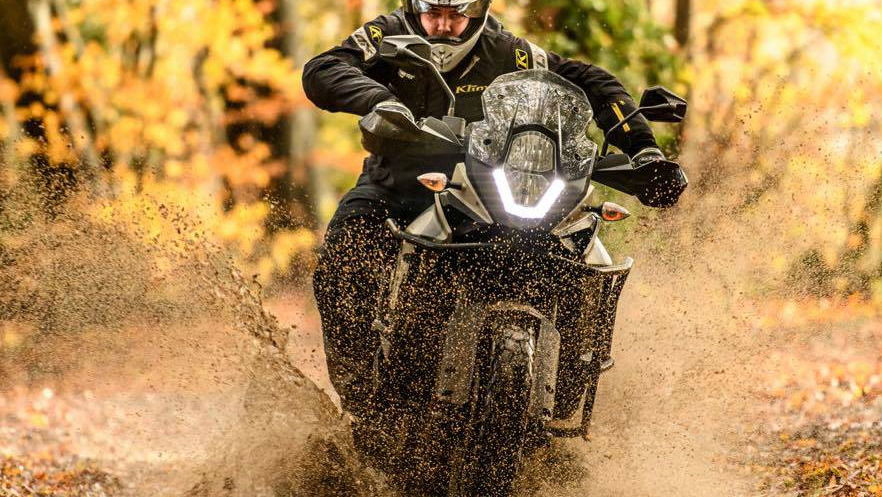
By Alan Dowds
ONE of the best ways to improve your fitness and bike control is off-road riding. Getting out and about in the muddy stuff is physically demanding enough to improve your fitness, and also builds up a whole panoply of moto-skills, from body position, weight transfer and control of power and braking, to managing a bike on the edge of grip.
Where to start though? Well, if you’ve got a vaguely off-road capable machine you can have a go on your local green lanes. Many rough unpaved dirt roads in the UK are totally legal to ride your bike on, and green laning, as it’s known, is a simple, low-octane way to get off-road miles in.
We spoke to our old mate, Phil Steinhardt, who as well as being a top moto-photographer, runs Ride the Wild – an off-road riding company in Wales. Here’s Phil’s five essential tips on beginner green-laning. Starting with…
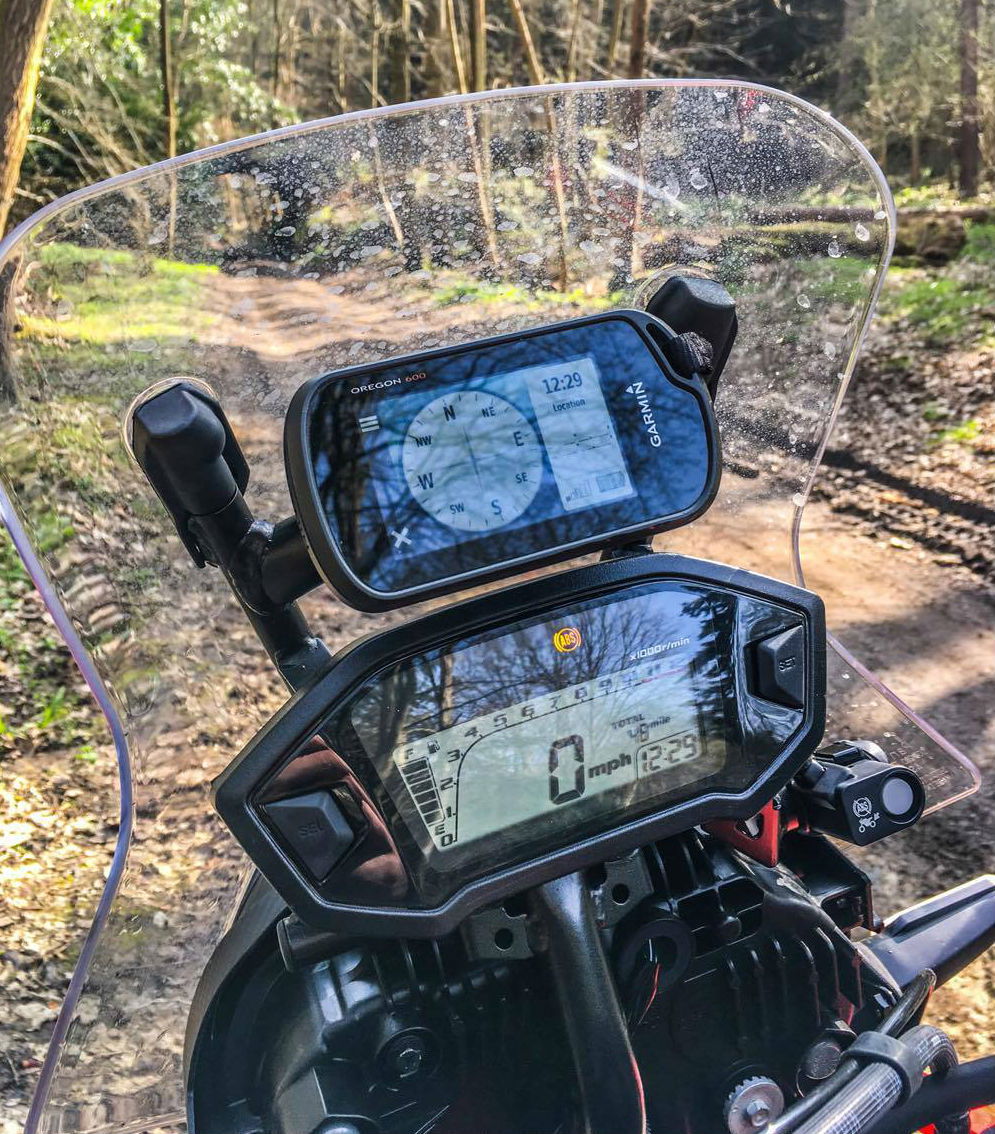
1. Route prep
“Plan a route: you can use OS maps, local council websites and/or an app/site like Viewranger. Failing that, get on some forums, contact the local Trail Riders Fellowship (TRF) or book a guide.
“Always take a mate; riding off road alone is never the best idea, especially for a beginner. Ensure you have someone to help in case you get stuck, break down or worse.”
“You can get away with wearing mostly road gear at first, but you must wear off-road boots if you want to keep your ankles intact. Body armour and sturdy knee pads are recommended, as are an off-road helmet and gloves, which will help to keep you cool.
“For your bike, ideally, you will want off-road tyres, especially if it’s wet or muddy where you will be riding. At the very least you’ll need a decent amount of tread on your tyres, and to make sure your bike is in good order. Check the brakes, suspension, chain, oil and coolant levels - an avoidable breakdown can be more than just an annoyance in the sticks.

“Pack a day bag too – you’ll want some food and drink to stay hydrated and keep your energy levels up, also some extra layers of clothing in case you get soaked or the weather changes. A tyre repair kit and a length of rope to help you free a stuck bike could be a life saver. Finally, a basic tool kit and some cable ties/spare levers are also a good idea.”
“First off – stand up. When you stand on the pegs, your weight is distributed over a far lower centre than when you are sitting and you’re less tied to the movement of the bike. This makes everything feel more stable on uneven terrain, and once mastered gives you the freedom of movement to compensate for the effect of the terrain on the bike.
“Keep your eyes ahead – EVERYONE looks at their front wheel off road to begin with, keep reminding yourself not to. Force yourself to look as far ahead on the trail as you can. Fixating on an obstacle will not help you to ride over it, but looking past it will help…
“Pick a line. Trails are wider than they seem, and more often than not they are worn in, which means they are concave in shape and have a cambered edge. this is often ignored and can be used to find grip where the centre of the trail has none. Obstacles can be easily avoided by taking a creative line, keeping momentum and reading the trail as far ahead as possible. We like to approach obstacles and short difficult sections with a “connect the dots” mentality - pick the next “easy” spot, and the one after that, and just keep connecting them to make a line down the trail.
“Move your body more. Off-road riding is very different to road riding, you can’t assume that you will have any consistent predictable level of grip or traction. Stay loosely connected to the bike at the pegs and bars so that you can move independently of the bike. Try to get a feel for how your body position and weight transfer affect how your bike behaves – spend some time just playing around, getting a feel for the effect of weighting the pegs, moving forwards and backwards.
“Rear brake: learn to use it. The rear brake is a huge part of riding off road. Make sure the ABS is off (even if only to the rear) and use the rear brake as much as you can at first.”
“First off – be legal. Byways are public roads. this means you must display a number plate, your bike must be registered, and you need a valid licence, insurance, tax and mot. You should also follow the highway code, ride with due care and attention, stick to legal areas only and generally not be a public nuisance.
“Be polite: you’ll no doubt encounter pedestrians, dog walkers, cyclists, horse riders and the like on your ride. Some of these may not be too pleased to see you making use of your legal right to ride a byway on a noisy smelly motorcycle, though most people you encounter will likely smile and wave or even stop for a chat. Be polite and respectful no matter what. If you encounter horses, or dog walkers unable to control their dog, pull over and kill the engine until they have passed. If you are confronted, stay calm and explain that what you are doing is fully legal.
“Be safe. Never forget that you’re on a public road, usually a very narrow, unsurpassed public ‘road’ with very poor visibility. It can be easy to get lost in the feeling of being out in the middle of nowhere and forget that there may well be 4x4s, quads or motorcycles coming the other way - and they may not be expecting to see you either.”
“Have fun! Bikes are fun, that’s why we love them. Ride at your own pace, don’t get too obsessed with technique and enjoy the experience.
“Beat fear. You’re going to fall off, you’re going to get muddy, you’re going to have the odd bump and bruise. Embrace it. don’t let it put you off: everybody falls over off road.
“Help out – if you fall over, you’re going to want help picking up your bike. The same goes for if you break down, have a flat tyre or run out of fuel. So if you see someone in need of assistance, help them out for everyone’s sake. Call it byway karma…”
